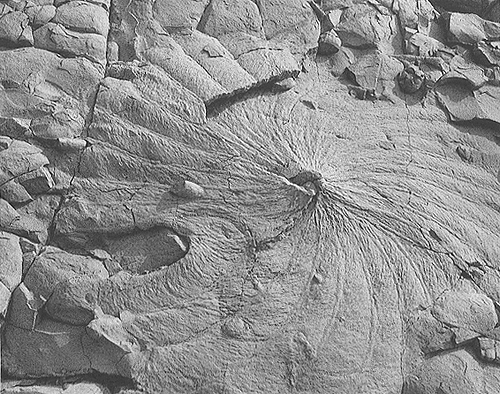
"Problematic" traces: Zoophycos
Plate 155

"Problematic" traces: Zoophycos
Plate 155
Even if you do not know exactly what kind of animal produced a certain trace, you can interpret its morphology by analogy with Modern counterparts (see plate 152). Many trace fossils, however, were made by extinct organisms, and have no analogs in Modern sediments. For this reason, they were grouped in the category of Problematica, or problematic traces. This stimulated ichnologists to thoroughly analyze the morphology of traces to infer the kind of activity or of organism that could possibly generate them.
Zoophycos is one of such forms. It is not purely superficial but three-dimensional, with a helicoidal structure winding around a vertical axis. On the upper bed surface, it appears like an umbrella or a parachute with arcuate or spiraled ribs. In between the ribs, meniscus-shaped wrinkles are more or less evident. Zoophycos is typically found in hemipelagic marls and mudstones (the example shown here) or in limestones (see color photo 24). It is one of the more complicated traces and reveals a systematic and spatially ordered strategy for exploring the sediment as a source of food. Every cubic centimeter was exploited within a certain area and a certain sediment thickness.
In terms of water depth, this trace characterizes a wide range, which is intermediate between the shallow-water zone with predominant vertical traces and the deepest recesses, where mostly superficial tracks occur.
Miocene marlstone heteropic with turbidites of Marnoso-arenacea Formation, northern Apennines.